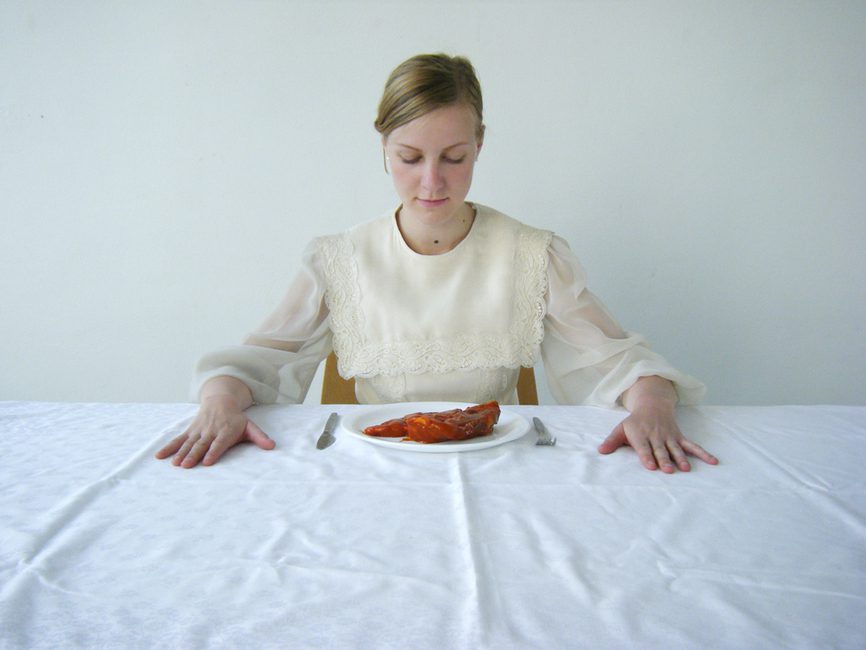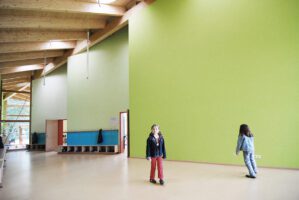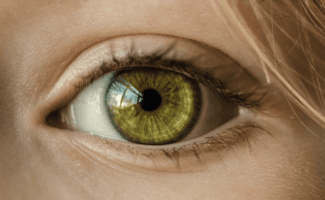Image: Klein and Zeitler FLR Course contribution
Professor Buether, do we still like it when we eat our chicken and peas under fluorescent lights?
First of all, our appetite changes. And all it takes is a slight change in light.
How did you find that out?
We have investigated this with hundreds of students at our university. They classified food according to color and played with the ambient light, changing filters to find out whether the food could still be identified. The banana and the reddish flesh, for example, are in the warm light range. If they only appear a little bluer, it already looks unappetizing. More red makes these dishes more attractive. There is a reason why tomatoes or meat in the supermarket are reddish or even colored.
Uncolored meat is inedible for us?
It actually has a rather grey color. But you can only find this at organic butchers. Everything else is dyed red with food coloring to make it look fresh and make you want to eat it.
Do bright colors upset your stomach?
They are definitely bad for your health. I know of studies by neurobiologists who served their test subjects food that looked completely white – in terms of nutritional value and vitamins, it was unchanged. After a short time, all those involved developed stomach catarrh. So all your brain has to do is think that something doesn’t look healthy – then you really can’t tolerate it.
Why do we like everything red so much?
In the course of evolution, our sense of sight has adapted to the natural light spectrum – that of the sun. And since humans evolved primarily outdoors and not in artificial light, our entire perceptual apparatus is geared towards this – towards sunlight and the glow of the campfire. They both have a continuous color spectrum – and that is the major difference to fluorescent lamps. They have a jagged spectrum that is particularly pronounced in the blue and green areas; other areas are almost completely absent. It sounds like a small thing, but it has a huge impact. Many things seem strange to us in this new light. Also our fellow human beings, our sexual partners.
Does my counterpart’s skin also look different?
Sure, the skin looks paler, sallow, and that has consequences. There are psychologists who claim that skin color is basically only there so that we can recognize whether the other person is sexually aroused or not. That may be an exaggeration. But it is clear that it is easier to recognize emotions when the entire colour spectrum is available.
Does the cold light make us feel colder?
You could say that. Overall, it acts as a pleasure killer. When the familiar person appears to change, it does something to our emotions.
Sounds like even the first flirtation in a café will be more difficult in future.
Sure, look at the people in two cafés next to each other – one lit by fluorescent lamps, the other by incandescent bulbs. You can see this very clearly in Berlin, or around our university in Halle: the former tend to remain empty, while in the others people sit together in warm light.
Manufacturers now also offer fluorescent lamps in the color “warm white”.
Nevertheless, the spectrum remains completely different, and with it the effect. The new lamps are supposed to save energy; the old ones work mainly because they generate heat. The glow cannot be imitated.
Isn’t it all a question of habit – can’t we adjust to the new light?
Theoretically yes, but you would have to spend all your time in rooms with this new artificial light. But we still have the sun, and we still like to let it into our rooms – nobody likes to work in completely windowless offices. A complete adaptation is therefore not to be expected. I rather assume that people will soon be buying the old light bulbs in specialty stores for a lot of money – just like you buy organic meat, which used to come from the farmer, in a specialty store.
How do oil paintings change in a new light? Van Gogh’s sunflowers now with a blue tint?
Museums already have this problem anyway. There are often paintings hanging in halls under neon light that were painted in completely different lighting, created in the open air or for churches. Now the picture changes once again.
The director of the Wallraff-Richartz Museum in Cologne considers both options to be wrong – he relies on a third variant: halogen light from so-called Solux lamps. What is the difference?
We should bear in mind that even van Gogh and his contemporaries probably did not paint in the artificial light of the new light bulbs. We are just used to seeing it as normal lighting. Museum staff therefore have to take a different approach and try to get as close as possible to natural light. This prescribed change is quite good for that: a discussion has started about what quality of light we want – and how much light at all.



